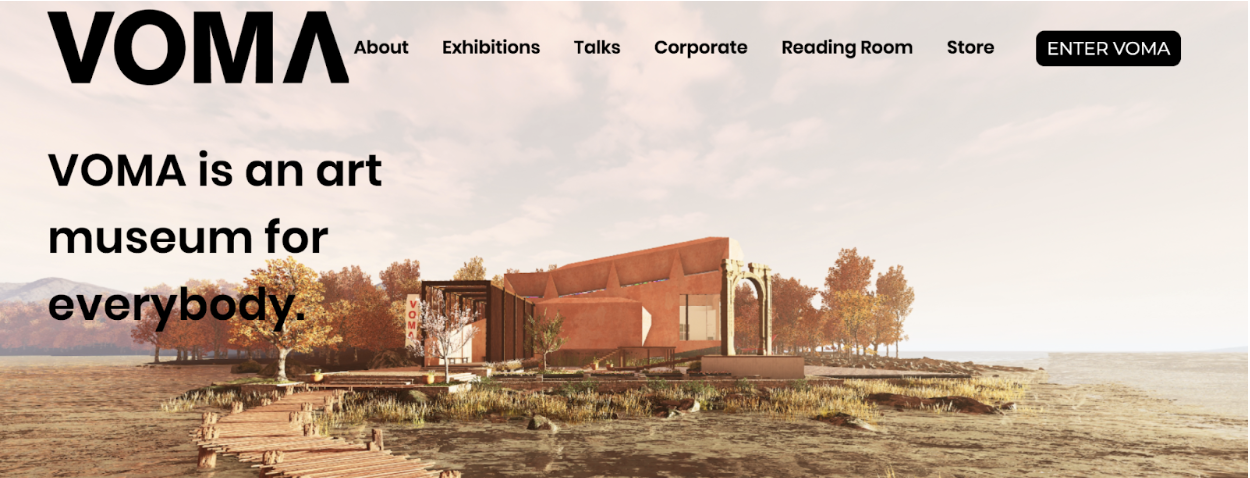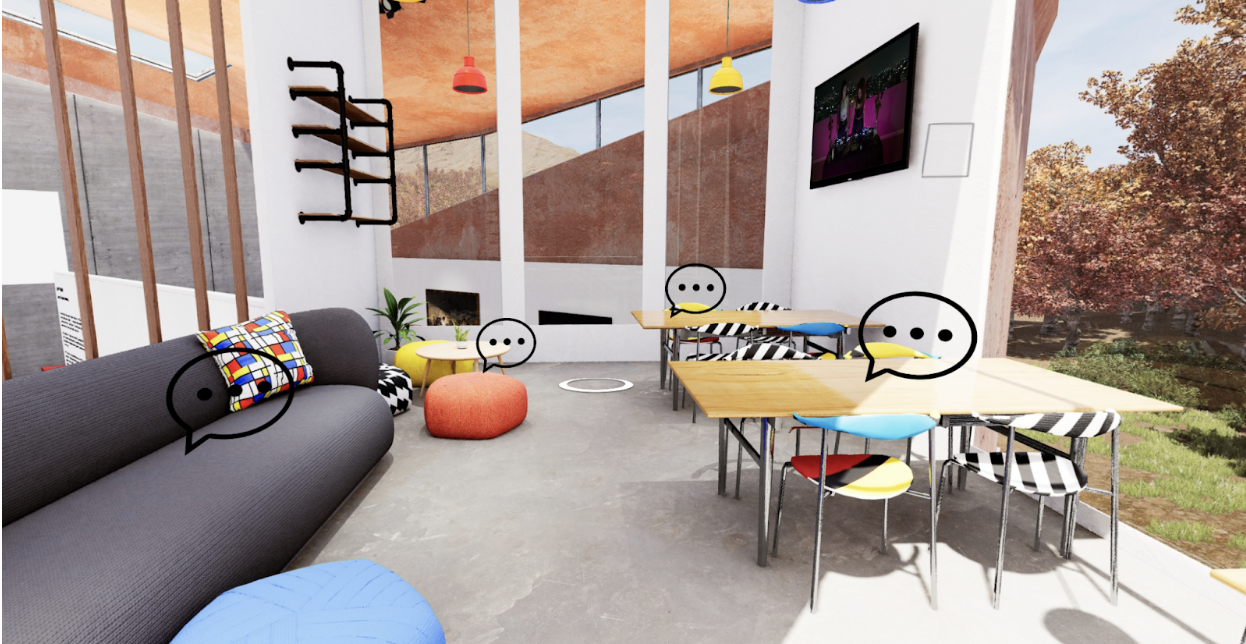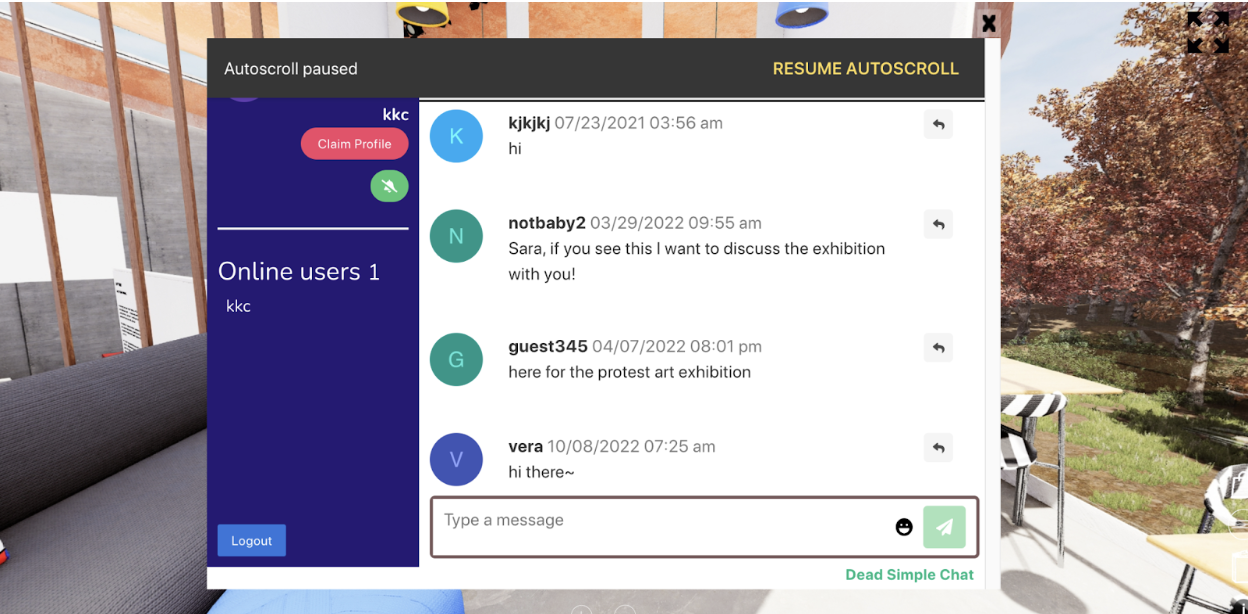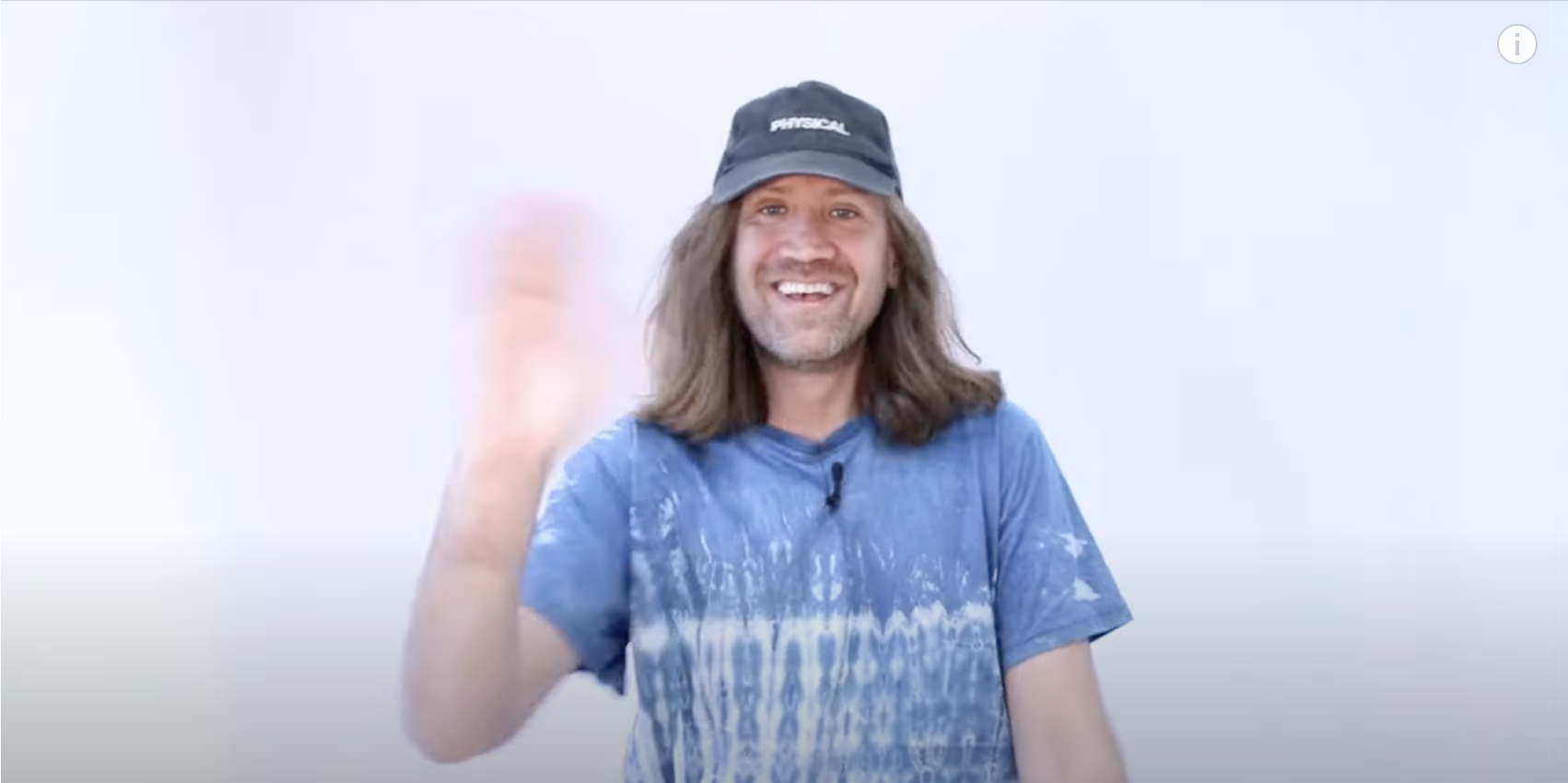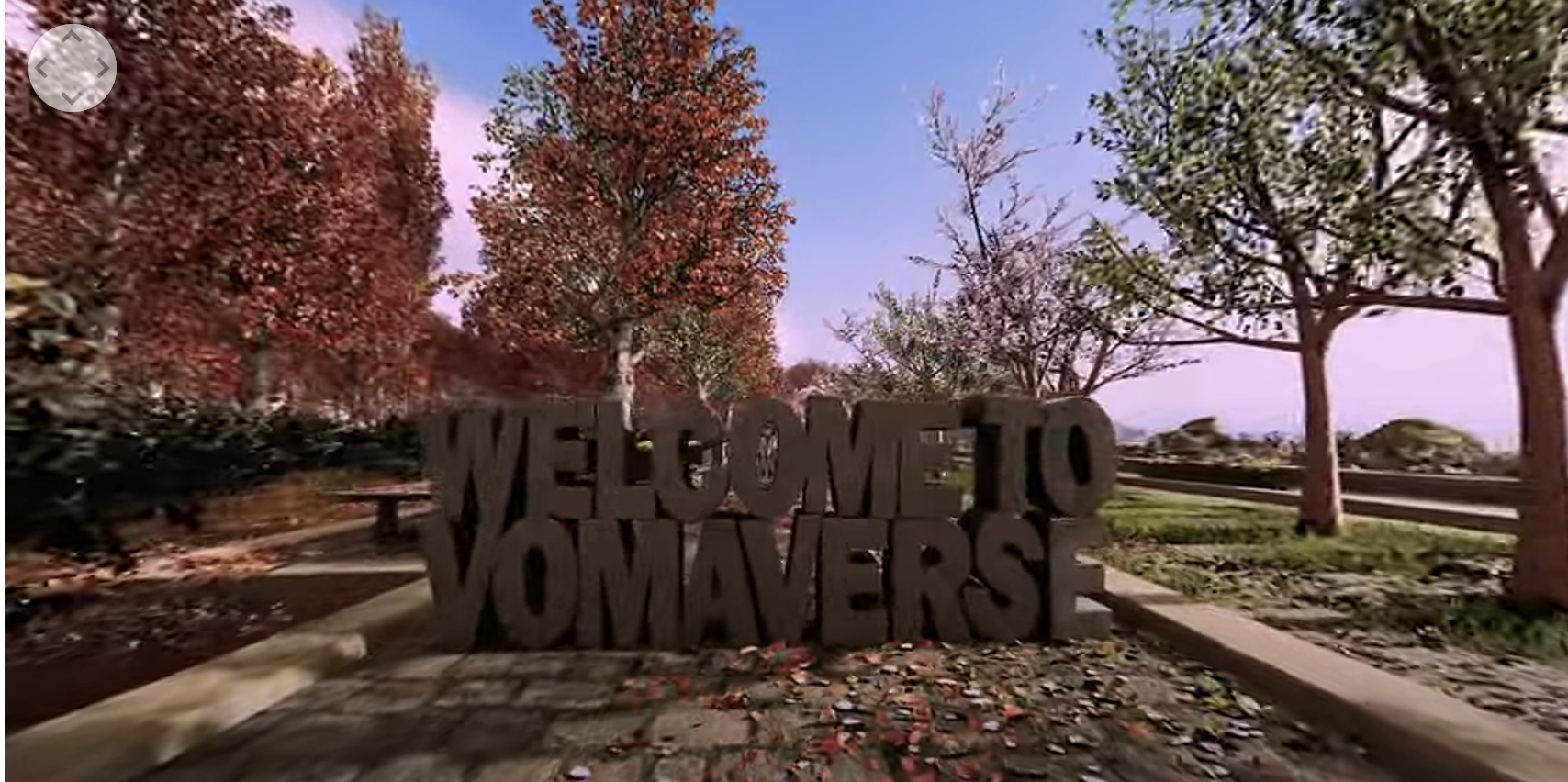XV. The Virtual Art Museum: The Potentials and Pitfalls of VOMA
- Kirstin Canner, The George Washington University
“I believe art should be for everyone. The internet is the most inclusive and democratic public space we have, and it’s time we had a digital museum-style institution ready to inspire and connect online audiences with great art” Stuart Semple 1
The concept of a virtual museum is not new. In the late 1990’s and early 2000’s, museums began experimenting with online technologies, and some created CD-ROMs that contained a museum experience accessible from a person’s personal desktop computer. For example, the National Museum of American Art began developing their CD-ROM in 1994. The goal of that project was to present “a rich portrait of American art in a social and cultural context - emphasizing NMAA as not only the leading repository of American art in the world, but also as a leading center in the research into and understanding of American Art in such a context”. 2 In the last 30 years, technology has advanced far beyond the early iterations of the virtual museum experience. Through the case study of The Virtual Museum of Art (VOMA), this paper will analyze advantages and disadvantages of the virtual art museum model.
VOMA was founded by Stuart Semple, a multidisciplinary British artist working across painting, sculpture, happenings, technology and activism. He is best known for his sociologically engaged works that often discuss youth politics, accessibility and democracy.3 Although Semple is the founder and actively involved in VOMA, the day to day operations are run by its Director, Lee Cavaliere. From 2007-2011, Cavaliere held the position of Senior Project Manager in Time-Based Media at the Tate. After that he was a freelance curator and art consultant, before launching his own non-profit, The Sixteen Trust in 2019. According to Cavaliere, “VOMA aims to become a hub for debate and discussion around innovation through the digital, to the end of expanding access, enabling new approaches. Through collective ownership, through innovation and debate, we can re-examine what a museum is, how it should work, what it should do."4
VOMA was at least partially funded by a Kickstarter campaign launched by Semple. As of October 25, 2022, the campaign had received £9,165 from 232 backers.5 The museum “opened its doors” on September 7, 2020.6 It claims to be the world’s first entirely virtual art museum.7 Though, this does not appear to be the case. One instance of a virtual art museum that existed before VOMA is The Kremer Museum (VR) experience, and consists of a collection of 74 Dutch and Flemish master paintings.8 The museum is accessed through an app-download, and then a user can experience the museum through a VR headset.
Accessing VOMA is simpler. A prospective user simply visits voma.space, and clicks the “enter VOMA” button located in the top right corner of the webpage. No downloads necessary. Upon entry, the visitor finds themselves facing the exterior of a building with a long hallway. The environment is carefully designed to evoke the feeling of autumn. The leaves are changing colors, and sound is incorporated to evoke the feeling of a cool, fall breeze. The environment surrounding VOMA seems to mimic the current season, suggesting the possibility that it may change alongside the external conditions. The hallway is exposed to the elements, and the illusion of natural light flows through the open ceiling. At the end of the hallway, you can see the entrance to a gallery, marked with a work of graffiti art by Banksy. To the right of the hallway is a courtyard that contains a small pond surrounded by floral landscaping. An added bonus is the inclusion of the sound of running water. The building itself exists on its own island, surrounded by water on all sides, with trees and mountains in the distance. It seems to have been built with the intention of evoking a sense of peace and relaxation.
Despite existing entirely online, Semple and Cavaliere made the decision to build a three-dimensional rendering of a museum “building”. This means that at some point, the team behind VOMA must have realized the inherent importance of museum architecture.9 VOMA’s building was designed by Emily Mann, a graduate of The Bartlett School of Architecture. The structure of the building is modern in design, and terracotta in color. There are large windows that allow the everlasting “sunlight” to pour into the gallery spaces. The map is broken up into seven spaces: the Sculpture Pavilion, Shop, Gallery Zero, Charity Wall, Gallery One, Artist Space, and they even have a Café. Interestingly, there are benches scattered throughout the museum, yet there are no people or avatars present to use them.
According to Paul Jones and Suzanne MacLeod, museum architecture is always commissioned and designed with particular uses, users, and projects in mind.10 So for what, who, and how is VOMA’s museum architecture used? Jones and Macleod also acknowledge that museum buildings have been caught up in some of the most negative and oppressive aspects of the social world. They are a part of a system where social inequalities are normalized and social space is de-politicised.11 VOMA’s director, Cavaliere addressed this in an interview, where he said they are actively working against these assumptions:
“We started with the building. That was quite interesting because when you go to a museum, it tends to be this monolithic structure that, effectively, shouts down at you a little bit. We wanted to create something that didn’t do that, and that was changeable. Our idea is that we are going to keep changing the building, and the landscape around it, which is a fun thing.”12
With this museum model, you get a lot of the benefits of having a museum building, without the burdens of a “real” building. With a physical space, museums need to worry about rent, utilities, maintenance, general upkeep, etc.13 After Amy Lee from the Arts Management & Technology Laboratory investigated VOMA, she noted that the architecture of the space the team behind VOMA created would be nearly impossible to create in person.14 She also made the observation that new exhibitions can be showcased more easily and frequently because there are no concerns about space, transportation, or maintenance costs.15 The team behind the museum has the ability to be agile, and change the environment to suit their needs.
However, there are costs and headaches associated with maintaining a virtual building. The site needs to be actively maintained in the code, otherwise users can experience 404 messages. As of November 8, 2022, when trying to access the information button in the bottom right corner of the museum, a 404 window popped up. This also occurred when trying to navigate the museum shop. This upkeep can be costly when considering the needed professionals and equipment. Also, there is the risk of loss of revenue, when users cannot access money-making links for the museum, like the gift shop.
There are many different objects on display in VOMA. There are graffiti works, oil paintings, sculptures, mixed media works, lithographs, frescos, photographs, music videos, and Youtube videos. VOMA is in a position where they are not limited by physical distance between artworks. They have the capability (if they have the access) to take artworks from separate continents and hang them on a wall next to each other. Semple and Cavaliere have created strategic partnerships with some of the biggest art museums in the world in order to “acquire” the artworks on display within VOMA.The Museum of Modern Art (MoMA) in New York City, the Art Institute of Chicago and the Musée d’Orsay in Paris have been essential since the museum first opened.16
Not only are there many different types of objects on display, there are also artworks that span artistic periods, artists, and movements. In Gallery Zero, VOMA visitors navigate through the exhibition Why We Shout: Art and Protest. The exhibition has been curated by Caveliere and aims to prove that “at the centre of any moment of social change or dissent throughout history, you will always find artists.”17 In this exhibition, there are works of contemporary artists hung alongside museum pieces. In Gallery One, the works on display are much different. In November 2022, the exhibition is Degenerate Art, from the Nazi Party’s 1937 exhibition. The more “classic museum” paintings in this space span 1908-1931, and many have come from MoMA.
The artworks are not simply photographed, then uploaded into the software. The partner museums send VOMA high resolution images of the artwork, and then the VOMA team creates 3-D reproductions. The result is a 360-degree object that has depth that a visitor can approach, walk around, and zoom in on.18
VOMA recognizes they have the opportunity to approach exhibitions a little differently than your “typical” physical museum. In many cases, Cavaliere and/or the staff have taken the time to do a virtual tour within their exhibition spaces. They use these occasions as an opportunity to explain their thought process behind the exhibition, and create an added layer of transparency. A great example of this:
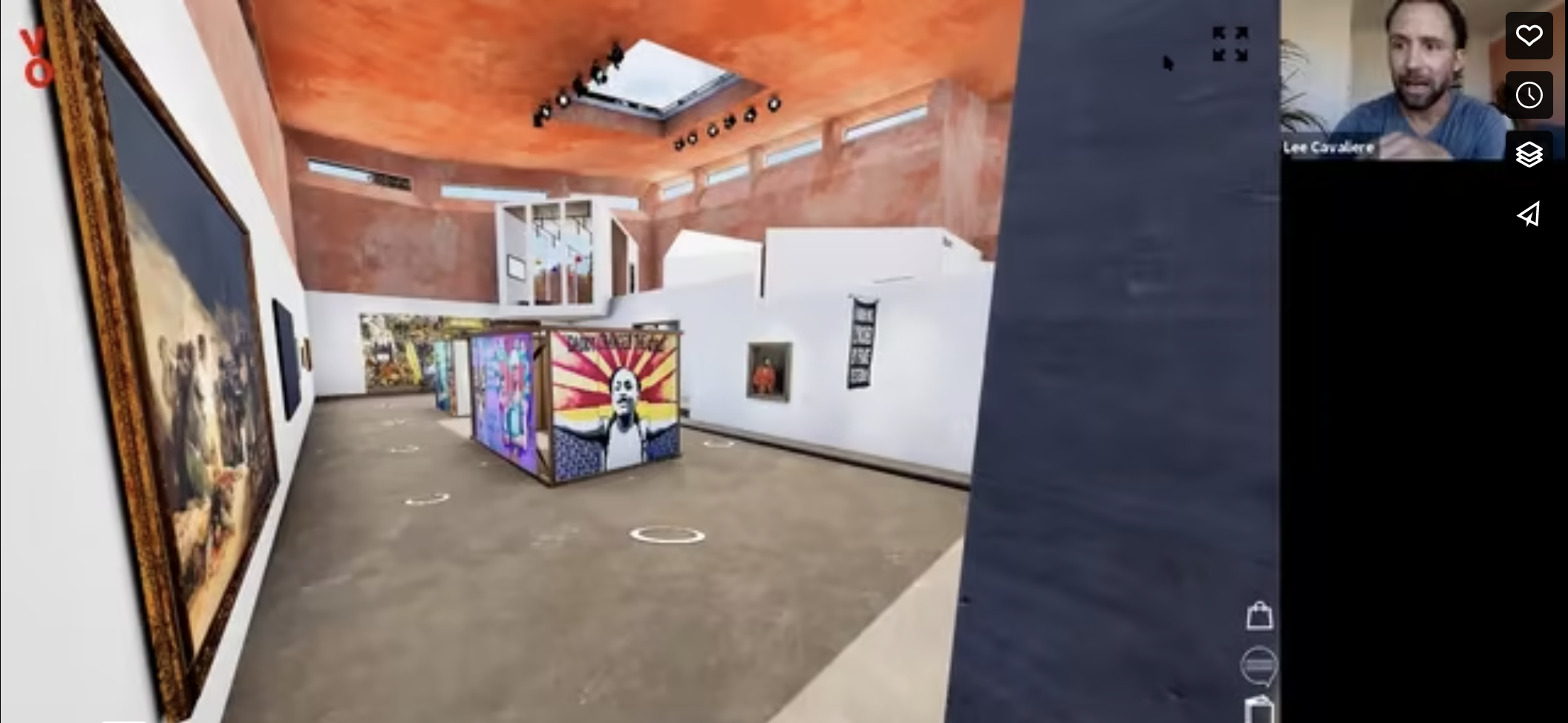
They record these occasions, presumably because they acknowledge that visitors will not always be available to participate at the time of the tour, but would like to watch at a later date.
The exhibitions may change within the “building”, but they exist in perpetuity on their website. VOMA visitors can discover all past exhibitions on the website. As of October 2022, there are eight exhibitions visitors can visit from the past: As We Meet, Breaking Into Color, Dani Marti, Reclaiming the Body, Martha Rosler, Degenerate Art, Bex Wade Dancefloors to Demos, and Art and Protest.
One thing that VOMA certainly delivers on is accessibility. When a visitor encounters the VOMA website, the first thing they see below the navigation headings is the statement “VOMA is an art museum for everybody”.19 Navigating the museum is pretty simple. There are white circles located on the floor, and by clicking on them, you move throughout the space. You can click directly on an object to have it enlarge on your screen. By clicking on the “i” next to the artwork, you can find the label. The label details who the artist is, the name and date of the work, what type of artwork it is/material it is made of, context, and an indication of where the original is located. Some labels give the user the option to listen to the label. There are a few labels that read the label in a different language (Spanish, and French for example), but there is no option to translate the text itself for the user to read.
An element that is lost in this virtual art museum world is scale. Deborah Kaplan, a docent from the Smithsonian American Art Museum, notes that we implicitly measure and assess the space and objects around us in relation to our bodies,20 and we simply cannot do that in VOMA’s space in the same way as we can in person. We can compare the size of objects in comparison to each other, but without knowing the scale of the building, it is hard to assume the true size of an object. When a visitor’s body is in close proximity to a work of art that is immense, there is an interaction between that person and the object that cannot be replicated in interacting through a computer screen. A large piece of artwork in contrast to the body has power. It looms, envelops, or sometimes overwhelms.21
The museum is free to enter, and can be accessed by any of the 5.03 billion internet users in the world.22 So who is visiting this museum? As of January 2022, VOMA had been accessed by visitors in more than 60 countries. 50-60% of visitors are accessing the museum on their phones. One of their major audiences is 18-25 year-olds. 20% of visitors are repeat visitors. The time spent in VOMA was between 7-90 minutes. They even reach people in rural areas that may not live near any art museums.23
Stephen Conn in his book “Do Museums Still Need Objects?” states that he believes museums are places situated at the intersection of objects, ideas, and public space.24 In many ways, VOMA could exist within this intersection, but it has not yet reached this potential. Their museum model uses objects from around the world to illustrate topical ideas. What is somewhat lacking is the inclusion of public space. Semple believes:
“A virtual viewing room can feel like a lonely place — quiet, empty, sometimes slightly uneasy. In building and curating VOMA, we wanted to get away from that feeling, which is not all that different from walking into a snooty, silent gallery space and feeling a bit self-conscious. We wanted to integrate the sense of community and buzz of going to a cool museum, where there are often so many different shows going on, and immersive or interactive experiences.”25
So he acknowledges that a virtual viewing room can feel like a lonely place, yet a VOMA user is alone throughout their experience. Through the statistics listed above, it is clear the site is reaching the sometimes-illusive gen-z audience that many other museums dream of having, yet there is no way for their social-media oriented psyches to react and respond to the space, in the space.
The role of the Café has the potential to fulfill the desire of visitors to interact with each other, but at this point appears to be largely ineffective. In this space, visitors can communicate with one another by leaving messages in different chats. There are different blurbs (shown in figure 4) that a user can send messages in, but there is no clear distinction for how to choose one blurb over the other. Perhaps if there were prompts to encourage conversation on a specific topic, the chat function could be more effective.
Although there are opportunities to interact with other visitors, the chats are segmented. It appears very rarely will you find yourself online in the same chat as someone who is also visiting at the same time as you. Figure 5 shows us just that. People haphazardly send a message to the chat, wanting to connect with others, only to have it left unanswered. The interactions as a result can hardly be called “conversations”. The Cafe is also the area that the visitors finish their experience on, assuming they follow the natural flow of the space, and they see the experience through to the end.
Director Cavaliere is hopeful that VOMA can be a “listening post for developing culture. Culture and history are moving targets, and [we] must keep evolving with that.”26 Perhaps VOMA’s next endeavor will help fulfill this need for a sense of public space. Creator Stuart Semple has released a youtube video describing “VOMAVERSE”, created by artists, for artists to showcase their work. It seems like this iteration was due to launch in Spring 2022, yet it has not come to fruition as of November 2022.
With the addition of VOMAVERSE, hopefully VOMA can deliver on the wants and needs of their audience, and exist in the intersection of objects, ideas, and public space.
Notes
-
Stuart Semple. “VOMA - a free virtual art museum for everyone!”. Kickstarter. https://www.kickstarter.com/projects/culturehustle/voma-a-free-virtual-art-museum-for-everyone. ↩︎
-
Smithsonian Institution Archives. “Interactive CD ROM Development Records, 1994-1995”. https://sova.si.edu/record/SIA.FA01-105. ↩︎
-
Stuart Semple, “About”, https://stuartsemple.com/about/. ↩︎
-
Lee Cavaliere, “About VOMA”, https://www.voma.space/about. ↩︎
-
Stuart Semple. “VOMA - a free virtual art museum for everyone!”. Kickstarter. https://www.kickstarter.com/projects/culturehustle/voma-a-free-virtual-art-museum-for-everyone. ↩︎
-
Lalla Merlin, “Inside VOMA: the Virtual Online Museum of Art”, blooloop, https://blooloop.com/museum/in-depth/voma-virtual-online-museum-of-art/. ↩︎
-
Nalewicki, Jennifer. “The World’s First Entirely Virtual Art Museum Is Open for Visitors”. Smithsonian Magazine. https://www.smithsonianmag.com/travel/worlds-first-entirely-virtual-art-museum-is-open-for-visitors-180975759/ . ↩︎
-
The Kremer Collection. “The Kremer Museum”. https://www.thekremercollection.com/the-kremer-museum/. ↩︎
-
VOMA. “About VOMA”. https://www.voma.space/about. ↩︎
-
Jones, Paul, and Suzanne MacLeod. “Museum Architecture Matters.” Museum and society 14, no. 1 (2017): 207–219. ↩︎
-
Jones, Paul, and Suzanne MacLeod. “Museum Architecture Matters.” Museum and society 14, no. 1 (2017): 207–219. ↩︎
-
Lalla Merlin, “Inside VOMA: the Virtual Online Museum of Art”, blooloop, https://blooloop.com/museum/in-depth/voma-virtual-online-museum-of-art/. ↩︎
-
Lalla Merlin, “Inside VOMA: the Virtual Online Museum of Art”, blooloop, https://blooloop.com/museum/in-depth/voma-virtual-online-museum-of-art/. ↩︎
-
Lee, Amy. “Taking The Museum Experience Online With VOMA: The Virtual Online Museum Of Art”. Arts Management & Technology. https://amt-lab.org/reviews/2021/5/taking-the-museum-experience-online-with-voma. ↩︎
-
Lee, Amy. “Taking The Museum Experience Online With VOMA: The Virtual Online Museum Of Art”. Arts Management & Technology. https://amt-lab.org/reviews/2021/5/taking-the-museum-experience-online-with-voma. ↩︎
-
Nalewicki, Jennifer. “The World’s First Entirely Virtual Art Museum Is Open for Visitors”. Smithsonian Magazine. https://www.smithsonianmag.com/travel/worlds-first-entirely-virtual-art-museum-is-open-for-visitors-18097. ↩︎
-
Wall Text. Gallery Zero, Why We Shout: Art and Protest. Virtual Online Museum of Art. Web. ↩︎
-
Nalewicki, Jennifer. “The World’s First Entirely Virtual Art Museum Is Open for Visitors”. Smithsonian Magazine. https://www.smithsonianmag.com/travel/worlds-first-entirely-virtual-art-museum-is-open-for-visitors-180975759/ . ↩︎
-
VOMA, “Home”. https://www.voma.space/. ↩︎
-
Kaplan, Deborah. “‘What Does It Matter Where My Body Happens to Be?’ A Personal View of Online Art Museum Tours.” Journal of Museum Education 46, no. 4 (2021): 531–546. ↩︎
-
Kaplan, Deborah. “‘What Does It Matter Where My Body Happens to Be?’ A Personal View of Online Art Museum Tours.” Journal of Museum Education 46, no. 4 (2021): 531–546. ↩︎
-
Statistica. “Number of internet and social media users worldwide as of July 2022”. https://www.statista.com/statistics/617136/digital-population-worldwide/. ↩︎
-
Lalla Merlin, “Inside VOMA: the Virtual Online Museum of Art”, blooloop, https://blooloop.com/museum/in-depth/voma-virtual-online-museum-of-art/. ↩︎
-
Conn, Steven. “Do Museums Still Need Objects?”” Philadelphia: University of Pennsylvania Press, 2010. ↩︎
-
Matador Network, “VOMA Is the World’s First Fully Immersive Virtual Museum”, https://matadornetwork.com/read/voma-worlds-first-fully-immersive-virtual-museum/. ↩︎
-
Lalla Merlin, “Inside VOMA: the Virtual Online Museum of Art”, blooloop, https://blooloop.com/museum/in-depth/voma-virtual-online-museum-of-art/. ↩︎

